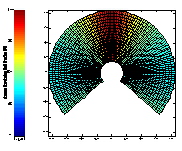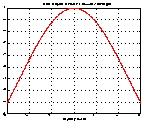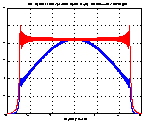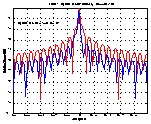

Radar Sensor Concepts - LSI enjoys the challenge of applying state-of-the-art
technology to advanced sensor system designs. The company’s technical
products cover the systems development cycle from the performance requirements
definition, through system and subsystem specification, performance prediction,
and hardware prototype. The company’s activities have ranged from sensor
technology studies, to realization of proof-of-concept demonstration systems.
One example spanning concept, system and subsystem performance prediction,
as well as hardware development and integration is the wideband surveillance
radar (WBSR) test bed. The WBSR system features include custom developed
wideband hardware and processing technologies, and operates from UHF through
L-Band with a 1 GHz tunable bandwidth, dynamic waveform agility, an electronically
scanned active array aperture, and an adaptive digital beamforming architecture.
The WBSR was trailer integrated for portability. Another example covering
concept, performance prediction, and projected system realization and
costing dealt with next generation candidates for the Navy’s surface search
operations. One candidate shown here is a wideband X-Band active array
architecture that was optimized to host extended dwell - high search rate
processing algorithms for periscope and mast detection. The concept
was developed to improve currently fielded capabilities while maintaining
affordability and adherence to realizable platform prime power and payload
constraints.
prototype. The company’s activities have ranged from sensor
technology studies, to realization of proof-of-concept demonstration systems.
One example spanning concept, system and subsystem performance prediction,
as well as hardware development and integration is the wideband surveillance
radar (WBSR) test bed. The WBSR system features include custom developed
wideband hardware and processing technologies, and operates from UHF through
L-Band with a 1 GHz tunable bandwidth, dynamic waveform agility, an electronically
scanned active array aperture, and an adaptive digital beamforming architecture.
The WBSR was trailer integrated for portability. Another example covering
concept, performance prediction, and projected system realization and
costing dealt with next generation candidates for the Navy’s surface search
operations. One candidate shown here is a wideband X-Band active array
architecture that was optimized to host extended dwell - high search rate
processing algorithms for periscope and mast detection. The concept
was developed to improve currently fielded capabilities while maintaining
affordability and adherence to realizable platform prime power and payload
constraints.
Performance Prediction - LSI’s strong theoretical capabilities coupled
with broad practical experience enables the company to create rigorous, physics-based
analytical models that are both realistic, to allow  meticulous performance prediction, and flexible, for comparative
evaluation of alternative concepts. Using state-of-the-art scientific
programming tools, LSI routinely provides customers with thorough system/subsystem
analysis and most importantly, solutions to difficult design problems.
For example, the figure on the left represents a concept system's antenna
beam co-registration characteristics from a moving platform after range
delay correction. The time line properties of the analysis reflect
both the sensor platform’s motion characteristics, and the sampling and
duration of the coherent processing interval (CPI) designed to optimize
detection and false alarm performance.
meticulous performance prediction, and flexible, for comparative
evaluation of alternative concepts. Using state-of-the-art scientific
programming tools, LSI routinely provides customers with thorough system/subsystem
analysis and most importantly, solutions to difficult design problems.
For example, the figure on the left represents a concept system's antenna
beam co-registration characteristics from a moving platform after range
delay correction. The time line properties of the analysis reflect
both the sensor platform’s motion characteristics, and the sampling and
duration of the coherent processing interval (CPI) designed to optimize
detection and false alarm performance.
A second example shown below illustrates the linear FM pulse compression loss that results from operating a large antenna array with a wideband waveform and phase only beamforming. These examples illustrate the kind of detailed analysis results that LSI can provide to meet customer needs.


